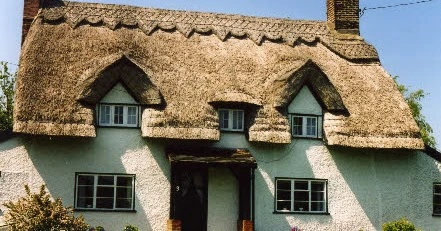Imagine the cozy charm of a thatched roof cottage nestled in the countryside with a storybook feel. Thatched roofs have been around for centuries, adding character and rustic beauty to homes. But how often should you replace this unique roofing material to ensure your home is picturesque and protected?
What is a Thatched Roof?

A thatched roof is a traditional roofing material made from dried vegetation such as straw, reeds, or grasses. It is one of the oldest types of roofing in the world, dating back thousands of years. Thatched roofs are known for their natural look and eco-friendly properties, blending seamlessly into rural landscapes. The thatching process involves layering bundles of vegetation in an overlapping pattern to create a waterproof covering for the roof structure. This technique requires skill and craftsmanship to ensure proper insulation and durability against various weather conditions. Thatched roofs offer excellent insulation, keeping homes cool in summer and warm in winter. They also have a unique aesthetic appeal, adding charm and character to any building they adorn. Thatched roofs are sustainable and renewable, making them an environmentally friendly choice for homeowners looking to reduce their carbon footprint.
The Benefits of Having a Thatched Roof
When choosing a roofing material, thatch roofs offer a unique charm and aesthetic appeal that is hard to match. The natural look of thatched roofs can instantly elevate the overall appearance of any home or building, adding character and warmth. Thatched roofs are known for their excellent insulation properties, keeping homes cool in the summer and warm in the winter. This can lead to energy savings on yearly heating and cooling bills. Additionally, thatch is a sustainable material, often made from renewable resources like straw or reeds, making it an eco-friendly choice for environmentally conscious individuals. With regular upkeep and repairs as needed, a well-constructed thatched roof can last for decades, providing long-term value for homeowners. The benefits of having a thatched roof go beyond aesthetics; they also offer practical advantages for those looking for a unique and sustainable roofing option.
Factors That Affect the Lifespan of a Thatched Roof
Thatched roofs are a charming and traditional roofing option that can add character and warmth to any home. However, the lifespan of a thatched roof can vary depending on several factors. The type of material used for the thatch is crucial – water reed tends to last longer than straw due to its durability. The pitch of the roof also plays a role in how long it will last. A steeply pitched roof allows rainwater to run off quickly, preventing moisture buildup, which can lead to decay. Proper installation by experienced professionals is essential for ensuring the longevity of a thatched roof. Climate conditions, such as exposure to harsh sunlight or frequent heavy rainfall, can also impact the lifespan of a thatched roof. Regular maintenance and inspections are key in identifying issues before they escalate and require extensive repairs or replacement.
Signs That Indicate It’s Time to Replace Your Thatched Roof
As beautiful as a thatched roof may be, it’s essential to watch for signs that indicate it’s time for a replacement. One of the most obvious signs is if you notice large areas of missing or damaged thatch. If you find pests like birds or insects making themselves home in your thatch, consider replacing them. These critters can cause damage and create further problems down the line. If your thatched roof appears noticeably uneven or sagging in certain areas, this could indicate structural issues that warrant a closer inspection and potential replacement.
Steps for Replacing a Thatched Roof
When it comes to replacing a thatched roof, proper planning and execution are key. The first step is to assess the condition of your current roof – look for signs of wear and damage. Once you’ve determined a replacement is necessary, find a reputable thatcher with experience installing traditional thatched roofs. Discuss your options with the thatcher, including materials, design preferences, and estimated costs. Obtain any necessary permits or approvals required by local authorities before starting the replacement process. Prepare your property by clearing the area around your home to provide easy access for the roofing team. Ensure proper ventilation under the new thatch during installation to prevent mold or decay.
Alternatives to Thatched Roofs
When considering roofing options, weighing the pros and cons of each choice is essential. While thatched roofs have charm and appeal, they require maintenance and eventual replacement. Alternatives like metal roofs, asphalt shingles, or clay tiles offer different aesthetics and longevity. The decision on which type of roof to choose will depend on factors such as budget, climate, and personal preference. Whichever option you go for, ensuring proper installation and regular maintenance will prolong the lifespan of your roof and keep your home safe and cozy for years to come.




